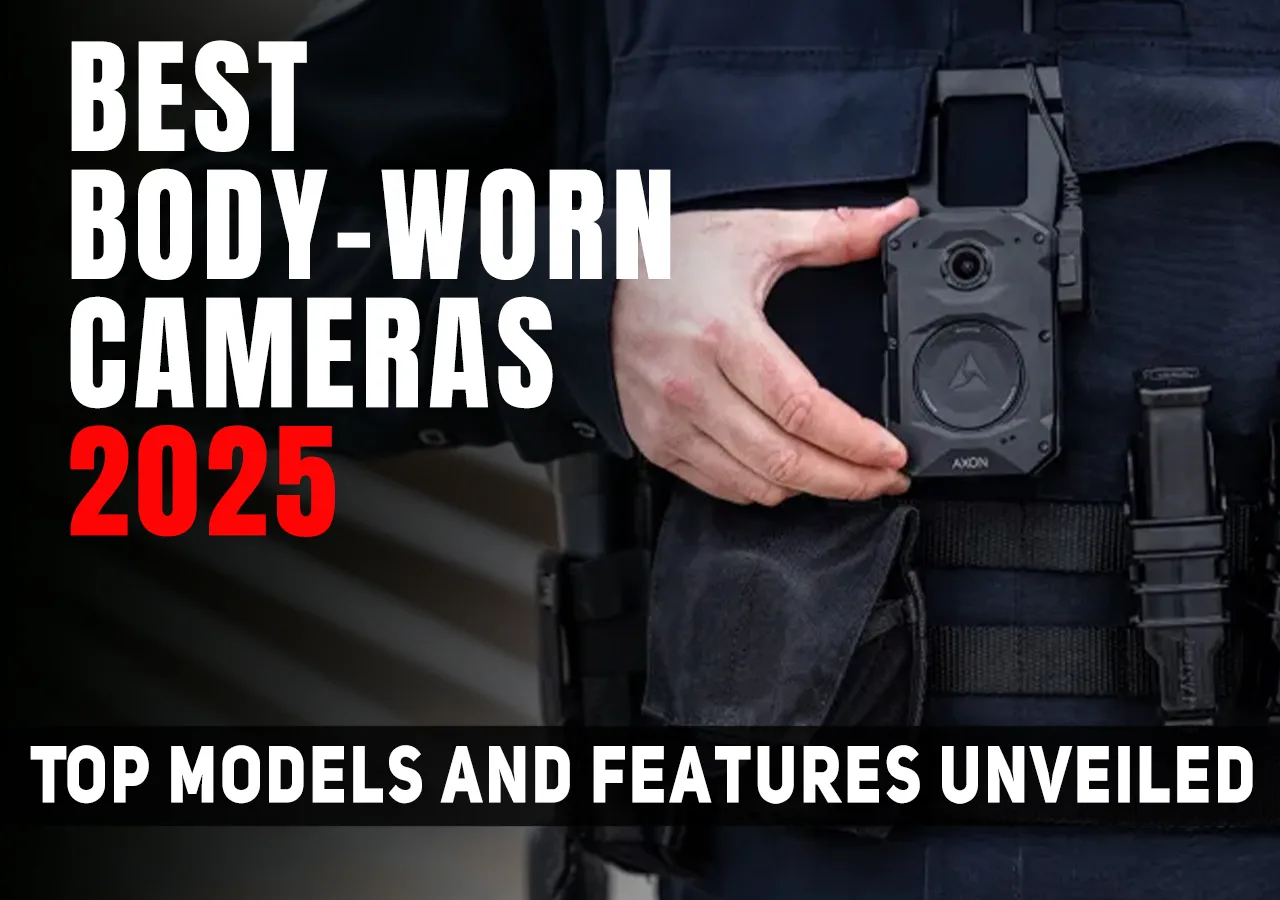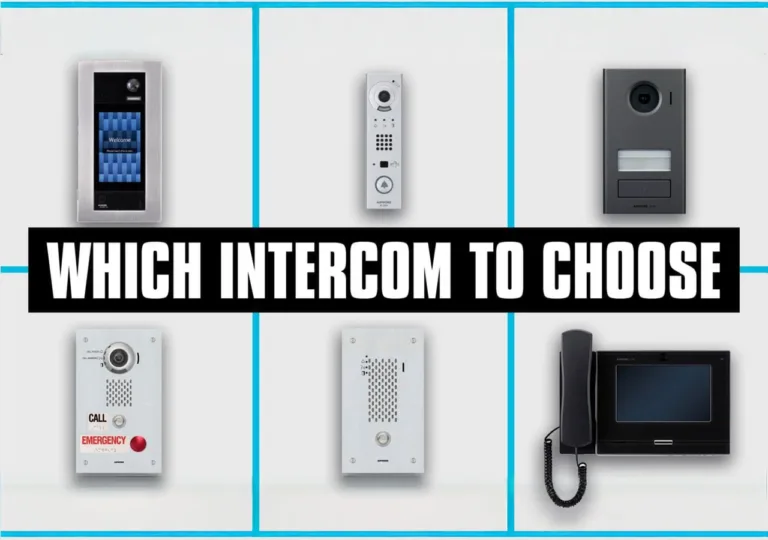Best Body Worn Cameras 2025
By 2025, the body worn camera has solidified its place as a game-changing technology, revolutionizing how interactions are captured and managed across a wide range of sectors. These wearable devices record high-definition video, audio, and often real-time data, serving as a vital tool for transparency and accountability. Originally developed for law enforcement, their applications have grown to encompass business, government services, and private industries. This article explores where body-worn cameras are used today, traces their historical evolution, and sets the stage for a look at top models available in 2025.
Where Are Body-Worn Cameras Used Today?
Body-worn cameras are best known for their use by police officers, where they provide evidence, reduce complaints, and help build public trust during encounters. However, their adoption has expanded well beyond law enforcement, fueled by improvements in durability, connectivity, and data management. In the business sector, private security firms rely on them to oversee high-risk environments like retail stores, warehouses, and event venues. Retailers use them to deter theft and document staff-customer interactions, ensuring compliance with safety standards. Logistics companies outfit delivery drivers with these devices to verify package handling and resolve disputes over lost or damaged shipments. In healthcare, hospitals deploy them to protect staff from violence, record patient interactions for training, and maintain accountability in high-pressure settings like emergency rooms.

Government services outside law enforcement have also embraced this technology. Firefighters use body-worn cameras to document rescue operations, offering footage for post-incident reviews and training. Municipal workers, such as parking enforcement officers or building inspectors, employ them to log public interactions, reducing conflicts and supporting legal claims. Transit agencies equip bus drivers and train conductors with these devices to monitor passenger behavior and ensure safety compliance.
In specialized industries, utility companies use them for technicians working in remote or hazardous areas, capturing maintenance procedures and verifying safety adherence. Construction firms deploy them to track site safety and worker productivity, while some educational institutions explore their use for classroom oversight and professional development. The military adapts them for training exercises and operational analysis, underscoring their versatility. This broad adoption shows how body-worn cameras have evolved into a multi-purpose tool, addressing the needs of organizations aiming to mitigate risks, boost transparency, and leverage data effectively.
The History of the Body Camera
The development of police body cameras began in the early 2000s, driven by a growing need for accountability in law enforcement. Agencies sought dependable ways to record officer interactions, reduce use-of-force incidents, and provide objective evidence in disputes. Early versions were basic—think bulky setups pairing shoulder-mounted recorders with simple cameras. One of the first notable efforts emerged in 2006, when a company launched a head-mounted camera tethered to a shoulder unit, an awkward but pioneering step toward modern designs.
The turning point came in 2014 with a high-profile shooting in Ferguson, Missouri, which sparked global demand for police body cameras. This incident exposed weaknesses in traditional reporting, prompting departments worldwide to adopt them quickly. By 2015, trials in cities like London, New York, and Toronto showed significant results—complaints against officers dropped by as much as 93% in one California pilot program. These early models featured VGA or 720p resolution, 4-6 hour battery life, and SD card storage requiring manual uploads.
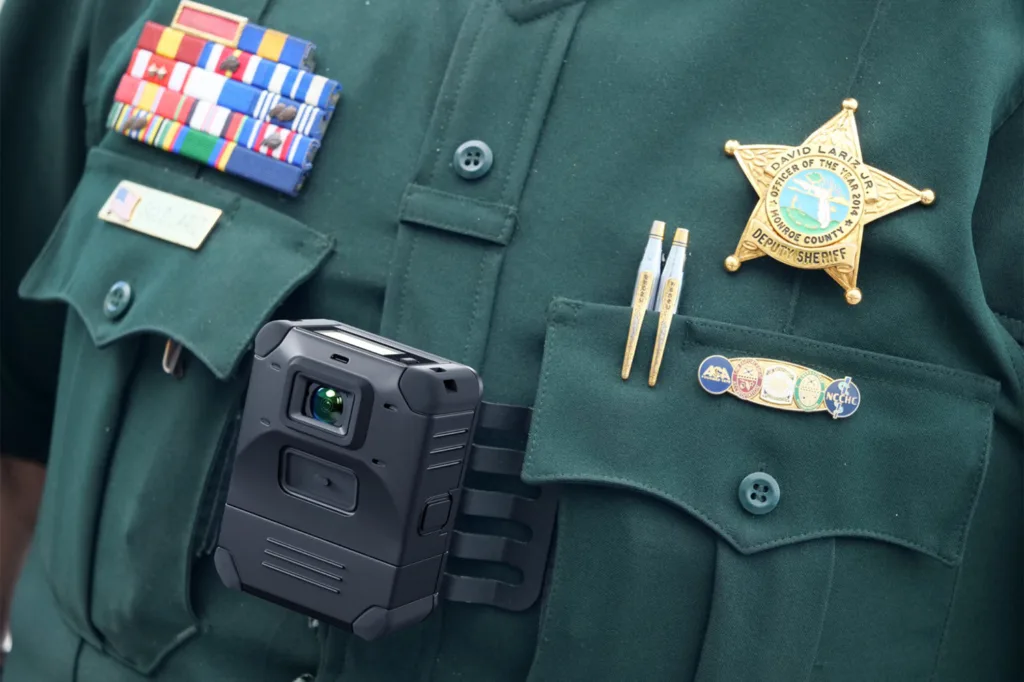
The late 2010s brought major upgrades. Cameras shifted to 1080p HD, with wider lenses (up to 140 degrees) and night vision for low-light conditions. Battery life stretched to 12 hours, and docking stations simplified data transfers. Cloud storage emerged as a game-changer, replacing physical media with encrypted systems that met tightening privacy regulations.
By the 2020s, police body cameras grew smarter and more connected. AI started tagging footage with metadata—time, location, incident type—streamlining administrative tasks. A key advancement was the addition of 4G LTE and Wi-Fi connectivity, enabling live streaming—a feature now common in 2025 models. This capability, widely documented in industry sources, allows real-time video and audio transmission to command centers, taking situational awareness to a new level. Supervisors can monitor incidents as they happen, offering immediate guidance or support—a leap beyond the record-and-review approach of earlier devices. Rugged designs also improved, with IP67 ratings for water and dust resistance and military-standard drop protection becoming standard.
In 2025, many body-worn cameras will offer 4K resolution for detailed forensic analysis, with batteries lasting up to 15 hours. Features like GPS tracking and bi-directional audio cater to users across policing, security, and other fields. The market reflects this expansion, projected to reach $1.5 billion by year-end, as body-worn cameras transition from a law enforcement tool to a global solution. This history highlights how technological progress has widened their reach, adapting to new challenges and industries with enhanced functionality and real-time capabilities.
Best Body-Worn Camera Models of 2025

The body-worn camera landscape in 2025 is rich with innovation, offering advanced options for law enforcement, security, and beyond. Below, we dive into five standout models—Axon Body 4, i-Pro BWC4000, Motorola V700, IONODES PERCEPT Body Camera, and AXIS W120 Body Worn Camera—each showcasing unique strengths through cutting-edge technology. We’ve included insights from professional security exhibitions, such as ISC East and GSX, where we captured footage of the IONODES PERCEPT and AXIS W120 in action, to highlight their real-world capabilities. These descriptions emphasize technical details and features, reflecting the diversity of modern body-worn cameras.
Axon Body 4
The Axon Body 4 is a flagship model tailored for dynamic environments like law enforcement and frontline operations. It features a 1080p HD camera with a 160-degree wide-angle lens, capturing expansive scenes with clarity. A key advantage is its bi-directional communication system, enabled by 4G LTE and Wi-Fi connectivity, which supports live streaming and real-time alerts. During critical incidents, the “Watch Me” button instantly notifies command, enhancing coordination—a feature that shines in high-pressure scenarios.

Its battery lasts 13 hours, ideal for extended shifts, and the IP67-rated design resists water, dust, and drops. With GPS integration, every frame includes location data, while cloud-based evidence management ensures secure storage and easy access. Weighing around 210 grams, it’s slightly heavier than some peers but balances this with a robust ecosystem of software tools. The Axon Body 4 excels for users needing seamless connectivity and immediate oversight, leveraging its real-time capabilities to bridge field and control room operations.
i-Pro BWC4000
The i-Pro BWC4000 is engineered for rugged reliability, making it a strong contender for users in harsh conditions. It records in 1080p with a 137-degree field of view and offers three resolution settings for flexibility. Certified to MIL-STD-810H and IP67 standards, it withstands shocks, extreme temperatures, and water exposure. The detachable, swappable battery provides up to 12 hours of use, with docking stations minimizing downtime—a practical touch for continuous deployment.

This model includes trigger-based activation, starting recording via motion or sound, which conserves power and storage. It also supports integration with in-car video systems, streamlining footage transfers for mobile units. While it lacks built-in LTE, its Wi-Fi connectivity allows uploads in networked areas. At 190 grams, its solid build prioritizes durability over ultralight design. The i-Pro BWC4000 stands out for its toughness and hands-free functionality, catering to professionals like police or security personnel in demanding outdoor settings.
Motorola V700
The Motorola V700 emphasizes connectivity and operational flexibility, delivering a 1080p camera with a 130-degree lens. Its defining feature is LTE streaming, paired with Wi-Fi, enabling live video feeds to command centers—a capability that transforms it into a real-time communication tool. The swappable battery lasts 12 hours, extendable with spares, ensuring uptime during long missions. Smart sensors sync with external systems like radios, enhancing situational awareness.
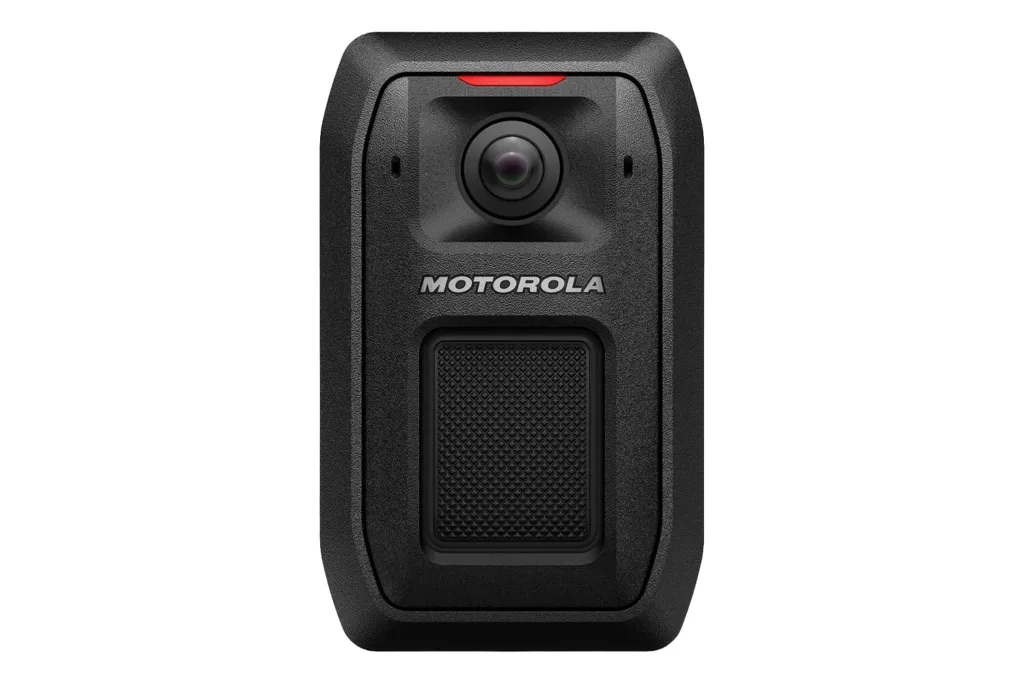
Built to an IP67 standard, it resists dust and water, while 128GB of onboard storage supports extensive recording, backed by cloud offloading. The camera’s design includes a pre-recording buffer of up to 60 seconds, capturing moments before manual activation—a boon for unexpected events. Weighing 200 grams, it’s equipped with a versatile mounting system for secure attachment. The Motorola V700 appeals to users needing live oversight and integration with broader command solutions, offering a blend of connectivity and reliability.
IONODES PERCEPT Body Camera
The IONODES PERCEPT Body Camera redefines visual fidelity, a quality we witnessed firsthand at the ISC East security exhibition in New York.
Watch our video here or on YouTube:
It features a 4K resolution sensor with a 180-degree Panomorph lens, providing edge-to-edge clarity without the distortion of traditional wide-angle lenses. This makes it ideal for detailed evidence collection or immersive documentation. At ISC East, we recorded its live streaming in action, enabled by 4G LTE and Wi-Fi, delivering real-time footage with impressive responsiveness.
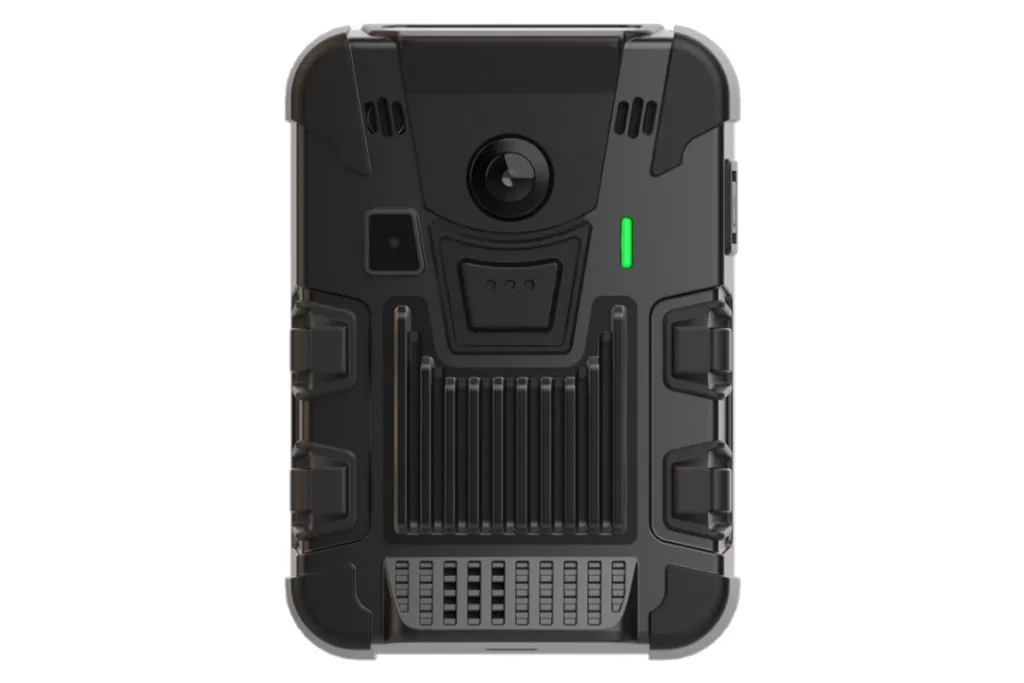
The battery offers 16 hours of runtime, extendable via docking, and includes bi-directional audio for direct communication. With an IP66 rating, it’s rugged enough for field use, and a 9-axis motion sensor stabilizes playback. The PERCEPT’s open-platform compatibility (e.g., ONVIF support) allows integration with various management systems, while AES-256 encryption secures data. At 248g (including the 6,000mAh battery), it’s lightweight yet powerful, appealing to security, enterprise, or industrial users who value high-quality visuals and flexible deployment.
AXIS W120 Body Worn Camera
The AXIS W120 Body Worn Camera brings network-driven innovation to the wearable space, a capability we explored at the GSX security exhibition.
Watch our video here or on YouTube:
It records in 1080p with a 137-degree field of view and integrates LTE/4G and Wi-Fi for live streaming, a feature we saw in real time at GSX as it transmitted footage with GPS coordinates to a control station. This real-time tracking and visibility make it a standout for coordinated operations.
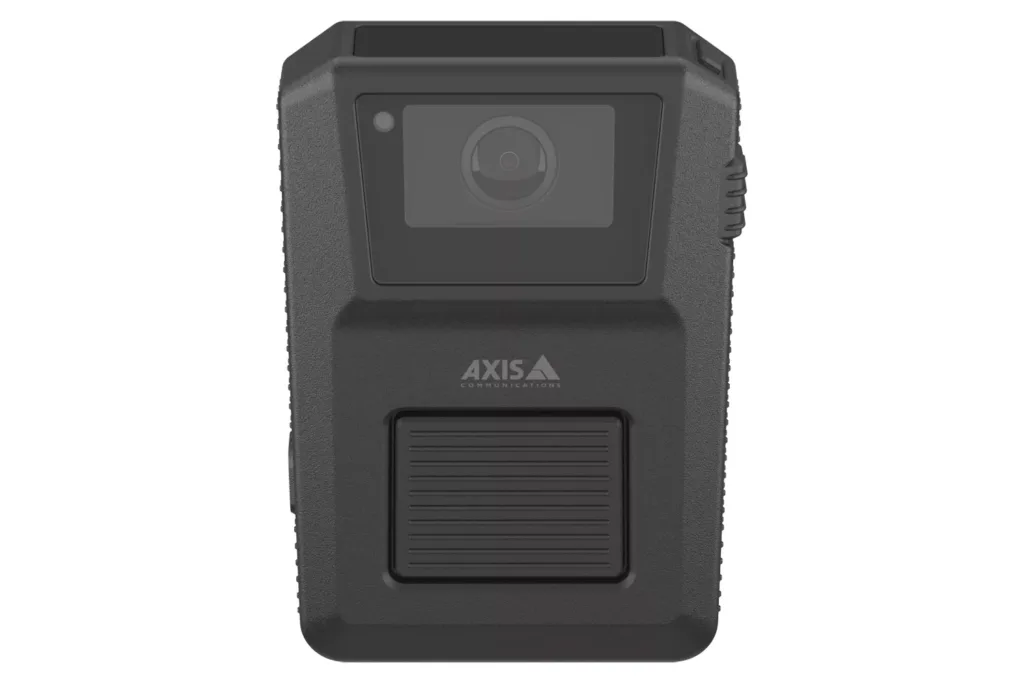
Its battery lasts an impressive 13.5 hours, with USB-C fast-charging, and a 120-second pre-recording buffer captures pre-activation events. Rated IP67, it’s waterproof and durable, while advanced noise suppression ensures clarity in noisy environments. The open architecture supports third-party video management systems, offering flexibility for existing setups. Weighing 200 grams, it’s among the lighter options, with a discreet design. The AXIS W120 excels for users in law enforcement or private security who prioritize live monitoring and system interoperability.
Technical Highlights and Exhibition Insights
These five models—Axon Body 4, i-Pro BWC4000, Motorola V700, IONODES PERCEPT, and AXIS W120—represent the forefront of body-worn camera technology in 2025, each tailored to specific needs without overshadowing the others. Our experiences at ISC East and GSX provided tangible proof of their capabilities. At ISC East, the IONODES PERCEPT’s 4K Panomorph lens and live streaming showcased its ability to capture every detail in real time, a leap forward for evidence quality. Similarly, at GSX, the AXIS W120’s LTE-driven streaming and GPS tracking demonstrated how it empowers instant decision-making, bridging the gap between field and command.
The Axon Body 4 shines with its bi-directional communication and ecosystem integration, perfect for connected operations. The i-Pro BWC4000 offers unmatched ruggedness and hands-free triggers for tough conditions. The Motorola V700 blends LTE streaming with smart sensor syncing, ideal for real-time coordination. The IONODES PERCEPT delivers superior visuals and open-platform flexibility, while the AXIS W120 combines long battery life with live tracking. All feature 4G LTE/Wi-Fi connectivity (except i-Pro’s Wi-Fi-only), high-resolution recording, and durable builds, meeting the diverse demands of 2025’s users—from policing to healthcare and beyond.
Comparison Table of the Best Body-Worn Cameras in 2025
| Model | Resolution | Field of View | Connectivity | Battery Life | Storage | Durability | Key Features |
| Axon Body 4 | 1080p HD | 160° | 4G LTE, Wi-Fi | 13 hours | Local + cloud storage | IP67 | Two-way communication, GPS tracking, “Watch Me” button for instant alerts |
| i-Pro BWC4000 | 1080p HD | 137° | Wi-Fi | 12 hours | Local + cloud storage | MIL-STD-810H, IP67 | Trigger-based activation (motion/audio), in-car video system integration |
| Motorola V700 | 1080p HD | 130° | 4G LTE, Wi-Fi | 12+ hours (swappable battery) | 128GB internal + cloud storage | IP67 | Pre-record buffer (60 sec), radio and smart sensor integration |
| IONODES PERCEPT | 4K | 180° (Panomorph) | 4G LTE, Wi-Fi | 16 hours | AES-256 encrypted, ONVIF compatible | IP66 | Motion sensor, bidirectional audio, vibration-resistant design |
| AXIS W120 | 1080p HD | 137° | 4G LTE, Wi-Fi | 13.5 hours | Open architecture, VMS support | IP67 | 120-second pre-record buffer, USB-C fast charging, discreet design |
Feature Breakdown and Best Use Cases
- Best Video Quality: IONODES PERCEPT – the only model with 4K resolution and an ultra-wide Panomorph lens for distortion-free footage.
- Longest Battery Life: AXIS W120 – 13.5 hours of operation plus fast charging via USB-C.
- Most Durable: Axon Body 4 and AXIS W120 with IP67 rating, making them fully waterproof and dustproof.
- Best for Real-Time Communication: Motorola V700 – seamless LTE streaming and integration with radios and smart sensors.
- Most Unique Feature: Axon Body 4 – “Watch Me” button, allowing instant alerts to command centers during critical incidents.
Key Questions About Body-Worn Cameras: Industry Insights & Expert Answers
As body-worn cameras become an essential tool across various industries, key questions arise about their usage, pricing, data management, and market growth. Drawing on expert insights and real-world applications, we answer the most pressing questions to help businesses, law enforcement, and organizations make informed decisions.
What Is a Body-Worn Camera?
A body worn camera is a compact, wearable device designed to capture camera footage in real time, typically used for security, law enforcement, and corporate applications. These devices record video and audio, often with GPS tracking, night vision, and real-time streaming capabilities, allowing users to document incidents for accountability and transparency.
Who Are the Top Body-Worn Camera Manufacturers?
The body worn camera market has expanded significantly, with key manufacturers leading innovation:
- Axon (known for AI-powered features and cloud integration)
- Motorola Solutions (strong in LTE-enabled security cameras)
- IONODES (specializes in ultra-HD video quality and Panomorph lenses)
- Axis Communications (pioneers in network-integrated cameras)
- i-Pro (Panasonic) (rugged designs for extreme conditions)
Each of these companies focuses on enhancing cameras footage quality, storage security, and device durability to meet the needs of law enforcement, private security, and industrial applications.
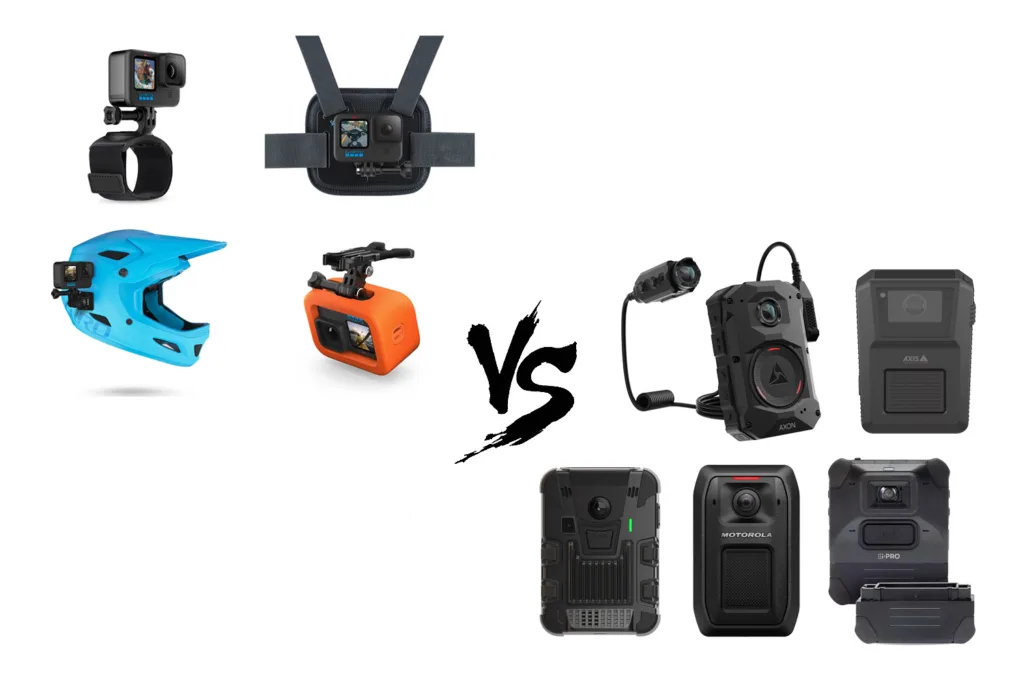
What Is the Difference Between a GoPro and a Body Camera?
While both devices capture video, body worn cameras are built for security and operational monitoring, featuring:
- Encrypted storage & compliance (ensuring footage cannot be deleted or altered)
- Real-time streaming (for command center oversight)
- Automatic activation (triggered by movement, audio cues, or emergency signals)
- Durability & battery life (built to withstand extreme environments)
In contrast, GoPro cameras focus on consumer-friendly recording, offering high-quality video but lacking the encryption, cloud integration, and operational security required for law enforcement and enterprise applications.
How Big Is the Body-Worn Camera Market?
The body worn camera market is projected to reach $1.5 billion by the end of 2025, fueled by increasing adoption in:
- Law enforcement (police accountability and crime prevention)
- Corporate security (monitoring employee and customer interactions)
- Military applications (military body worn camera solutions for field operations)
- Utilities and logistics (utility workers using cameras for field safety and compliance)
The demand is rising as governments and corporations invest in body worn camera solutions to improve oversight, reduce liability, and enhance transparency.
How Much Does a Body-Worn Camera Cost?
The body worn camera price varies depending on features and industry requirements:
- Basic models: $200-$500 (standard video recording, manual activation)
- Mid-range models: $500-$1,000 (LTE streaming, AI tagging, pre-recording buffers)
- High-end models: $1,000-$2,500+ (4K resolution, multi-network connectivity, biometric security)
For organizations implementing fleet-wide deployments, subscription-based cloud services may add ongoing costs for storage and AI-powered analytics.
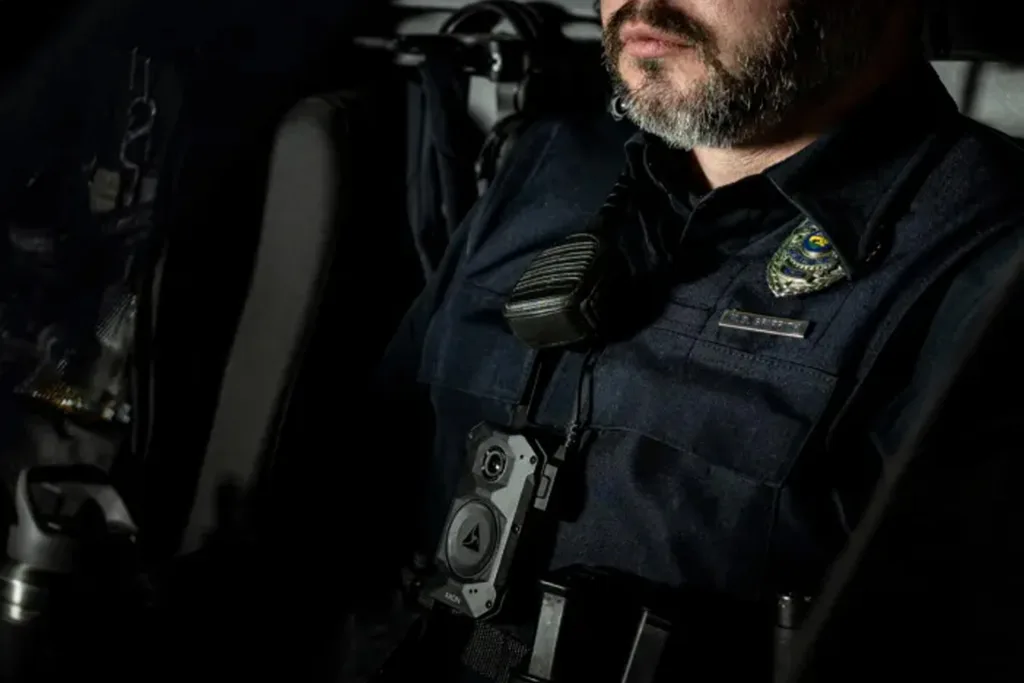
What Bodycam Do the Police Use?
Most police departments use Axon, Motorola, or Panasonic i-Pro body-worn cameras, prioritizing:
- High-definition video (1080p or 4K)
- Live streaming for real-time incident response
- Automated recording (triggered by sirens, weapons draw, or voice commands)
- Cloud-based evidence management systems
These features ensure police departments maintain secure, tamper-proof footage while enhancing public transparency.
Where Will Body-Worn Camera Data Be Stored?
Data from body worn cameras is typically stored:
- Locally (on-device storage or SD cards) for quick access
- Cloud-based storage for secure, remote access and AI-assisted search functions
- Hybrid models combining on-device SSD storage with cloud backups
Government agencies often require strict encryption protocols to protect cameras footage and ensure compliance with data protection regulations.
Who Can Access and Edit Body-Worn Camera Footage?
Access to body worn camera footage depends on industry policies:
- Law enforcement: Only authorized personnel can retrieve and edit footage, with access logs for accountability.
- Corporate security: Supervisors and compliance officers may review recordings to assess incidents.
- Healthcare & logistics: Data protection laws ensure patient and client privacy, limiting who can edit or share footage.
Tamper-proof encryption ensures that body worn camera recordings remain authentic and admissible as evidence.

How Will the Data from Body-Worn Cameras Be Downloaded?
Most body worn cameras use:
- Automated docking stations for bulk uploads
- Wireless cloud syncing via Wi-Fi or LTE
- Encrypted file transfers to prevent unauthorized access
This streamlined process ensures efficient storage, retrieval, and analysis of cameras footage for legal or operational review.
What Is the Battery Life of a Body-Worn Camera?
Battery performance varies, with leading models offering:
- 12-15 hours per charge (suitable for full shifts)
- Swappable battery options for extended use
- USB-C fast charging (featured in AXIS W120)
- Power-saving features (motion-based activation and adaptive recording)
For military and utility applications, military body worn camera systems integrate external power sources to extend field usability.
Conclusion: The Future of Body-Worn Cameras & Industry Insights
As body worn cameras continue to revolutionize security, law enforcement, and corporate oversight, staying informed about the latest innovations is crucial. From AI-powered real-time streaming to advanced encryption protocols, these devices are shaping the future of accountability, transparency, and operational efficiency.

Stay Ahead with Pipl Systems
For in-depth body worn camera reviews, security industry insights, and expert recommendations, subscribe to Pipl Systems—your trusted source for:
✅ Detailed product reviews on the latest security technologies
✅ Case studies on real-world camera applications
✅ Industry interviews with security professionals
✅ How-to guides for optimizing surveillance solutions
📩 Sign up today and never miss an update on the future of security technology!
🔗 Visit Pipl Systems for More Security Insights 🚀
-
How to Choose the Right Smart Lock for Your Business in 2025
In a home, one or two people hold the keys. In a business, dozens do. You have staff, cleaners, vendors, temps — and because of that, a business smart lock may open hundreds of times a day, which raises the stakes for reliability, accountability, and speed of management. So, frame the decision correctly. You are […]
-
6 Commercial Smart Locks Every Business Manager Should Know About
Keys have a talent for vanishing at the worst moment. And in a business where many people carry keys, that’s a recipe for lost time, unexpected cost, and real security gaps. Keys get copied, misplaced, or ride home in someone’s pocket after their last shift. Now you’re rekeying doors, chasing spare sets, and wondering who […]
-
Ajax DoorBell Full Review & Installation: AI Video Doorbell for Installers & Integrators
I’m Jack Dugas, a systems integrator with Roger’s Security Systems based in Toronto. Over the years, I’ve deployed hundreds of security solutions across residential and commercial properties, and I’ve worked extensively with Ajax Systems products – a platform I genuinely respect for its reliability, ease of installation, and intelligent design. In this article, I’ll walk […]
-
How to Choose a Commercial Intercom System in 2025
There are technologies we use every day without really thinking about how well they’re made. They blend into our routine so seamlessly that we forget they’re even there. A reliable commercial intercom system works exactly like this: effortless and invisible until something goes wrong. Think about what happens when the system works: a courier arrives, […]
-
From Immigrant to Security Integrator in 3 Years: 100+ Installations, Commercial Clients from Google
Immigrating to Canada and starting from scratch is never easy, especially when you’re building a business in the demanding world of security camera installation. In this episode of Pipl Systems Podcast, our guest Vitalii Sukhyna, Owner of Sense Group Security Systems, shares his candid, boots-on-the-ground story of how persistence, adaptability, and genuine client relationships helped […]
-
Podcast with Delmi Training: From Beginner to Security Installer through 4 Modules and Real Jobs
Most people in the security industry agree that the biggest challenge today is finding qualified technicians. In this episode of the Pipl Systems Podcast, we sit down with Roland Akwensivie, President of Delmi Solutions and founder of Delmi Training Institute in Toronto, Canada. His mission is clear: provide hands-on, job-ready education in network cabling, CCTV […]
